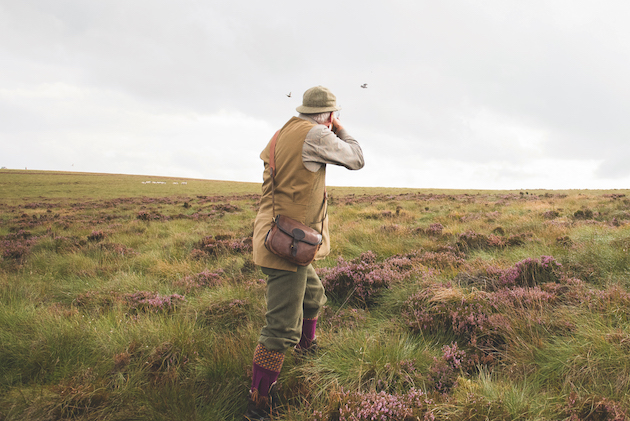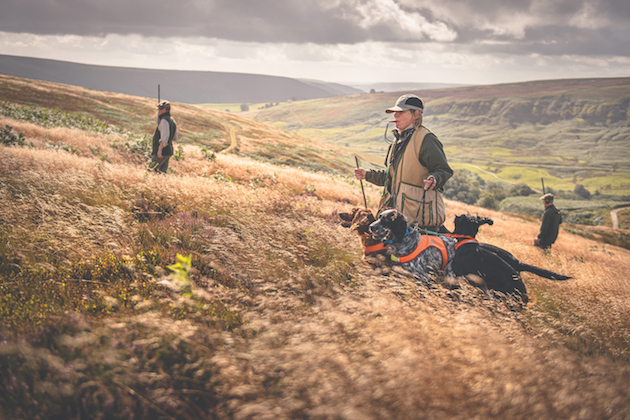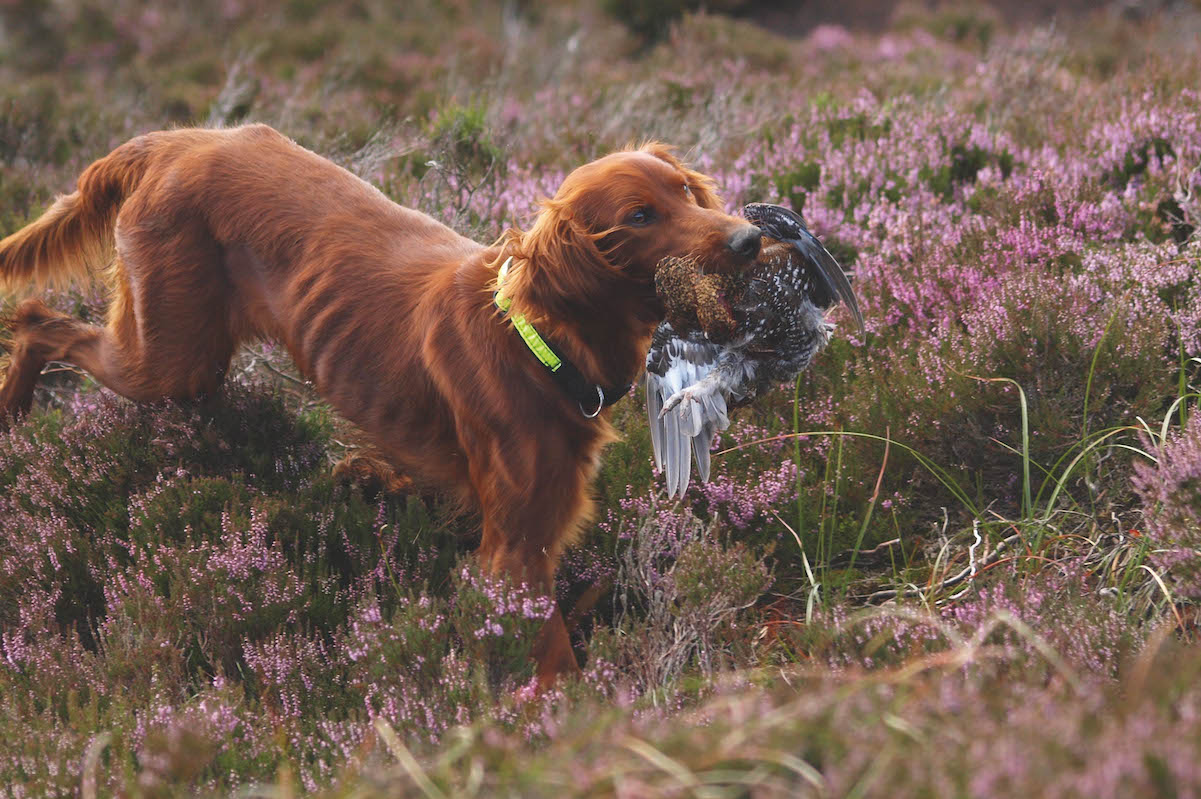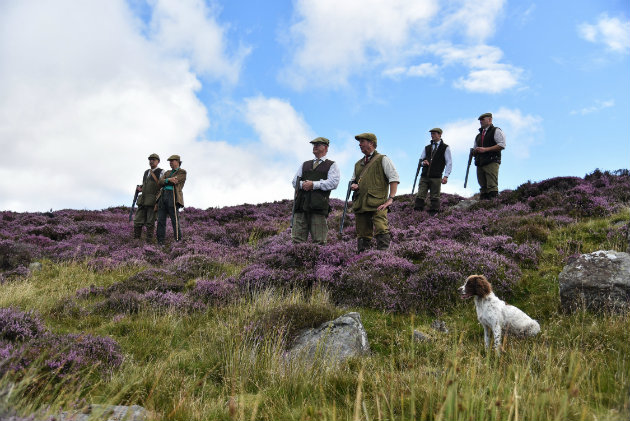Win CENS ProFlex DX5 earplugs worth £1,149 – enter here
Your essential guide to walked-up grouse shooting
<strong>A guide for the grouse shooting novice</strong>
 Alisdair Duncan, suddenly upon the grouse in good numbers; the bag grows
Usd 19 june 19 budget grouse
Alisdair Duncan, suddenly upon the grouse in good numbers; the bag grows
Usd 19 june 19 budget grouse
If you are ever lucky enough to be invited to shoot walked-up grouse, look forward to your day because there are few experiences to touch it.
Top tips for walked-up grouse shooting
- Safety first. Be aware of the ground you are walking across and always carry your gun open if walking is tough, the ground is uneven or you are faced with any type of obstacle.
- Be aware of your team at all times. Staying in line is vital, as is communication and concentration.
- If you are ever unsure of your angle of fire, do not shoot.
- Practise all types of angle and speed just above head height. Shooting at targets with a background can help you tune-in to birds flying with ground behind or under them.
- Know your distances. This will make a difference to your success rate and will increase clean kills. Always remember to mark your birds.
- Think about your clothing for the day, especially your footwear. (Read how to dress for walked-up grouse shooting.)
- Keep fit. Walked-up grouse can be hot, hard work and tough going.

Shooting over dogs
One common area of confusion is the distinction between walked-up grouse shooting and shooting over dogs. Shooting over dogs involves the use of pointers or setters, which will hunt widely across the moor until they locate a covey of grouse. The dog will then hold the birds on point until its handler commands it to flush them in front of a pair of Guns that have been brought forward to take the shot. The technique tends to be used where grouse numbers are fairly low. (More on shooting over dogs
Walking-up involves a group of maybe six or eight Guns, sometimes more, walking steadily in line abreast across the moor with labradors or spaniels working in front of them. It is essentially the same technique that a group of roughshooters might use when hunting pheasants on a field of sugar beet. (Read grouse over HPRs.)

Irish setters are a treat to watch as they range over heather moorland – and many will retrieve too
Make sure you are fit
Walking across a grouse moor requires above average fitness and stamina. Most regular, active Shots will be well up to the challenge, but even they should consider some basic preparation before the start of the season. Some fast walking around the lanes and up steep hills should stand you in good stead.
I also prepare my dog. From mid-July onwards I start some walking-up exercises to ensure I have full control over her when she is hunting, and that she will quarter back and forth in front of me, turning on command and keeping no more than 25 yards ahead. A dog that is out of control on a walked-up grouse day is liable to ruin everybody’s sport.
What to wear for walked-up grouse shooting
Kit for walking-up should be light and comfortable. Think of layers. A gilet over a traditional checked shirt is good on a dry autumn day. You’ll get warm walking-up through heather and over peat hags but make sure you have a weatherproof coat too.
Being a traditionalist, I wear tweed breeks, but most important are boots. Don’t wear wellies as you’re likely to turn an ankle on uneven ground. You need calf-length lace-up walking boots to keep your feet comfortable and dry all day. If you’re wearing breeks, don’t forget to wear gaiters to stop your socks catching on the heather and the ticks getting inside. (Read our tips for the best gaiters.)
View this post on Instagram
What to shoot
A light gun that you can carry with ease and comfort all day and with which you can shoot instinctively is what matters. Barrel configuration or bore size is irrelevant. Though I usually use my light 2½in side-by-side Cogswell 12-bore, shooting 28g of No. 7, I have had equally good results from a 28-bore over-and-under, while others in my regular party favour 16 or 20-bore.
Cartridges? I load from my pockets, but a cartridge belt works equally well for others, with reserve supplies being held back in the vehicles.
How to read the grouse moor
- Above all, watch the dogs. If scent is half decent, they will tell you when there are birds about, their noses going down and tails going into overdrive as they work up to the covey. With your own dog in front, you will be watching it all the time. If not, you must use some common sense. Grouse will usually favour heather over grass, and will often be sitting tight in the short-to-medium-length heather, so concentrate hard when approaching such ground.
- When climbing rising ground, make an effort to get smartly to the ridge, so that birds rising just ahead of you are not immediately over it and safely out of sight before you get a chance to shoot. If you have the option to do so, choose the route through rocks, burns or broken ground that offers the best view of ground from which grouse might flush.
- In heavy rain grouse will sometimes congregate on the more open knolls, out of the long, wet heather, and they will see you approaching from a distance and will flush at maximum range or beyond. Be focused, and prepare to shoot the moment the birds flush. Even when they lift at 10 yards you’ll be surprised at their acceleration, and if you hesitate then they’ll be out of range before you know it.
- If a covey flushes ahead and there is a chance to do so, then go for the old birds by selecting the larger, darker targets. This is a counsel of perfection that may apply early in August but, as the season progresses and the young birds develop, it soon becomes impossible to distinguish between young and old grouse until they are in the hand. In a late hatching year, however, avoid shooting immature birds or ‘cheepers’. They will make much more sporting targets in four weeks’ time and you’ll earn the keeper’s respect by holding your fire.
- Not every bird will present a going-away shot. When there is a crosswind, in particular, birds may curl back and present spectacular driven shots to Guns further down the line. Sometimes the covey may not flush together. Usually the first to jump will be the old birds, but when they have gone, grouse may continue to flush around you for several more seconds. Keep on the alert, even after having fired both barrels. Reload quickly, and ensure the ground is fully clear before sending the dog to retrieve any shot birds.
- The usual procedure when birds are down is to hold the line stationary while dogs are sent forward to retrieve. This applies unless a bird has been seen to drop a long way ahead, in which case the keeper may well decide to keep the line moving and to stop and pick the bird when the vicinity of the fall is reached. When grouse birds are being retrieved, remain stationary until you are told otherwise, even if you think there may be birds waiting to flush just ahead of you.
Grouse shooting safety
- The line of Guns must always be kept straight, with no one forging ahead or lagging behind. This is true also for beaters and dog handlers. The line should move at the speed of the slowest walker.
- A straight line is even more important when neighbouring Guns are not visible, as may be the case when crossing broken ground or steep gullies, and extra care must be taken in these circumstances. Even if you cannot see your neighbour, you must mentally mark where he or she is at all times.
- Most shots will be taken at low, fast going-away targets, which may seem unusual to those schooled to shoot only at high birds, but on the wide open spaces of the grouse moor this is perfectly safe, provided nobody swings through the line or shoots down it. It is also important to remember, on steep hill ground, that one end of the line may be 100ft or more above the other, so what may seem a high bird to the bottom Gun may in fact pass across someone higher up the line.
This article was originally published in 2014 and has been updated.
Related Articles
Get the latest news delivered direct to your door
Subscribe to Shooting Times & Country
Discover the ultimate companion for field sports enthusiasts with Shooting Times & Country Magazine, the UK’s leading weekly publication that has been at the forefront of shooting culture since 1882. Subscribers gain access to expert tips, comprehensive gear reviews, seasonal advice and a vibrant community of like-minded shooters.
Save on shop price when you subscribe with weekly issues featuring in-depth articles on gundog training, exclusive member offers and access to the digital back issue library. A Shooting Times & Country subscription is more than a magazine, don’t just read about the countryside; immerse yourself in its most authoritative and engaging publication.








